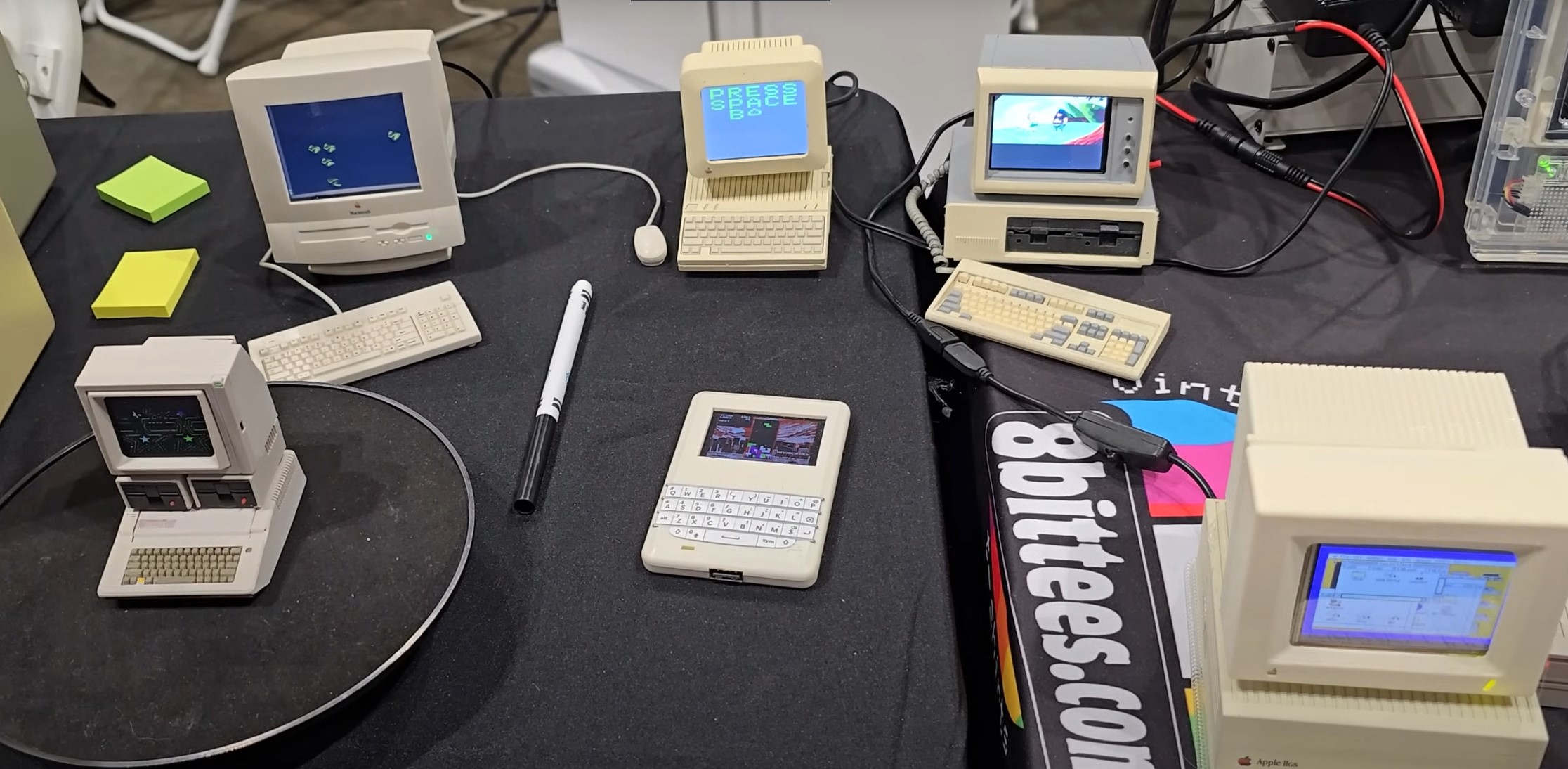
The venerable ESP8266 from Espressif is an awesome piece of kit which is often overlooked for more powerful microcontrollers, such as the Raspberry Pi Pico 2 and the ESP8266's successor, the ESP32. But Adventures in Retro Computing has managed to integrate the ESP8266 into a tiny 3D-printed Apple IIe setup. And best of all, it emulates the classic Apple machine!
We've not got an exact measurement, but in the video we can see that the entire emulated setup is smaller than an Apple mouse (which I remember using in high school). You could 3D print your own model using the best 3D printers. The print is based on option8's Apple IIe case, scaled for the screen, which is from an Apple Watch.
The setup is a classic Apple IIe, with dual 5.25-inch floppy drives and an Apple monitor. The keyboard and drives may not work, but the creator comments that external keyboards and a micro SD card reader can be attached with the latter being used to load disk images which can be selected on the tiny screen.
How can a microcontroller worth less than $5 emulate the Apple IIe? The device is based on an emulator from MFA2 which emulates the Apple II+ using the ESP8266 on a custom PCB. The PCB breaks out connections for HDMI, USB and micro SD cards, likely used to emulate floppy disk images. These units also come with their own speaker, LiPo battery, and a micro USB charge port.
Adventures in Retro Computing advises us that they are planning on producing some units for sale, should you be in the market for a tiny Apple IIe.
The build was made public at Vintage Computer Festival Midwest 19, which took place at the Renaissance Schaumburg Convention Center in Chicago on September 7 and 8. We've reached out to the creator for more information on the build, but in the meantime we spotted a video from RetroTV1 Tech which shows a range of 3D-printed retro computers, including the ESP8266-powered Apple IIe.
Dotted around the stall are an Apple IIGS, IBM 5150, Apple IIc, and what looks like an Apple Performa Power PC from the 1990s (which I learned Adobe Photoshop and Illustrator on back in college.)

You were probably thinking that this project was powered by a Raspberry Pi Pico or the new Raspberry Pi Pico 2. I certainly was as the Raspberry Pi Pico has proven to be a competent platform for retro home computer emulation. The Pico-iie project is an Apple II emulator that runs on the Raspberry Pi Pico using its own custom PCB.
The Apple II series (II, II+ or IIe) is a true icon of the early 1980s home computing scene, which saw a plethora of machines released across the world. Apple, Commodore, Sinclair, Acorn, Tandy, and many more, left their mark on the world of home computers. Some are still active to this day.







